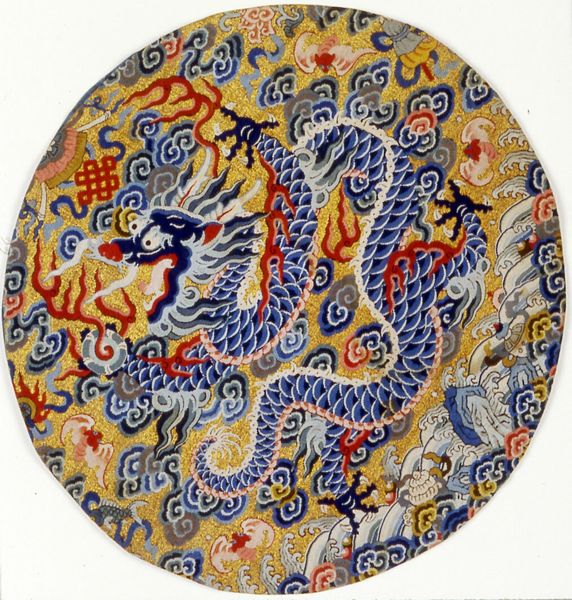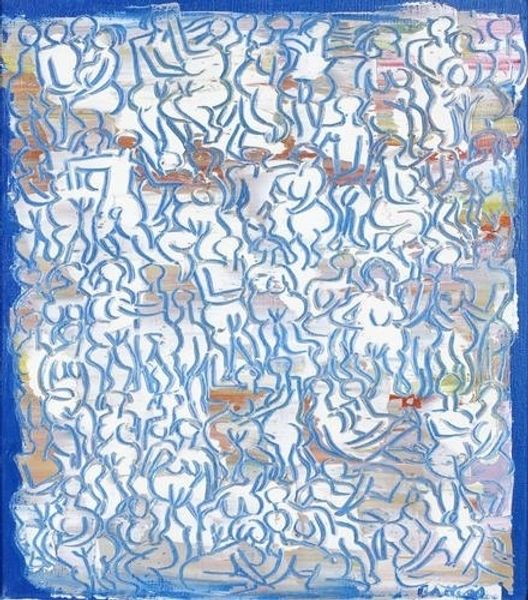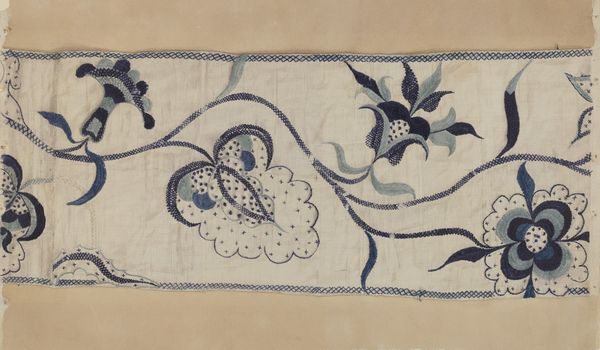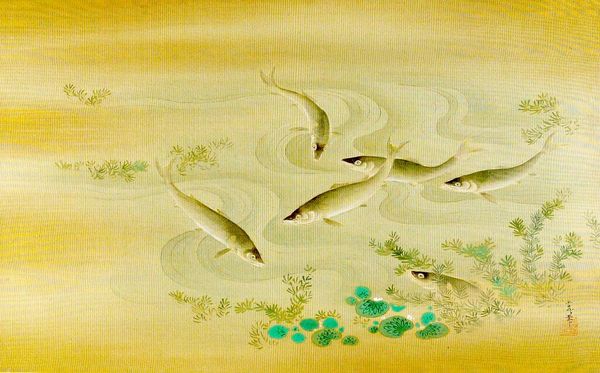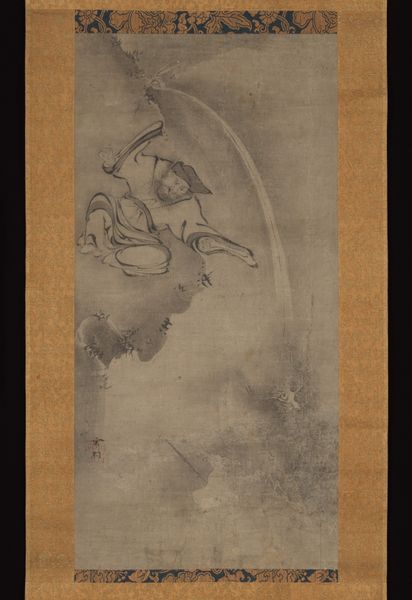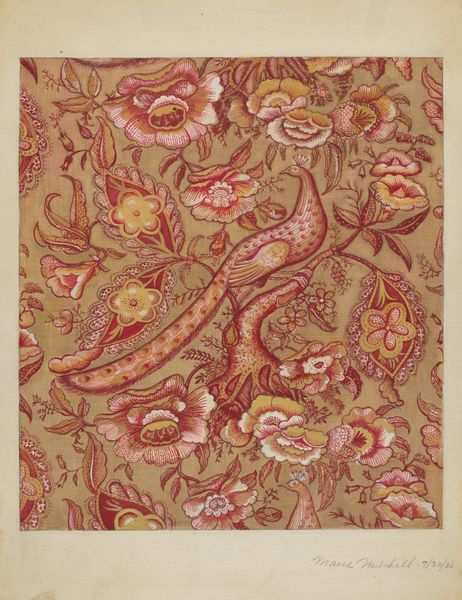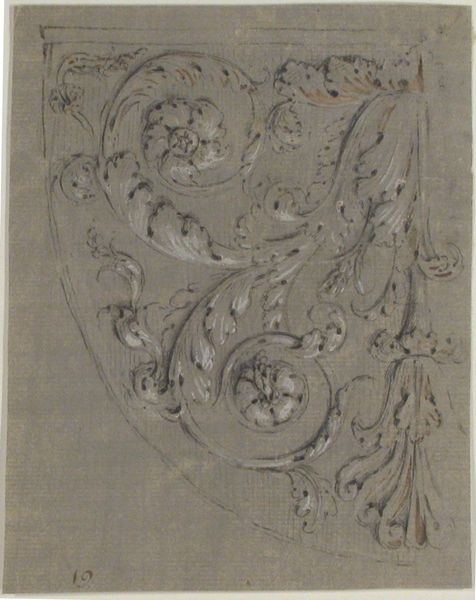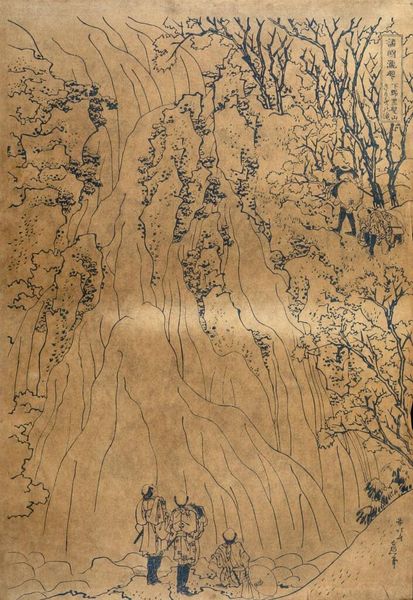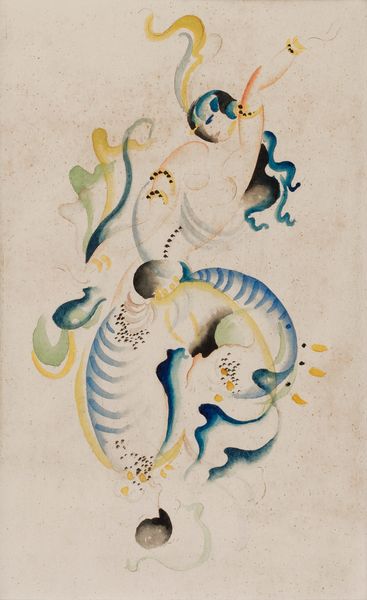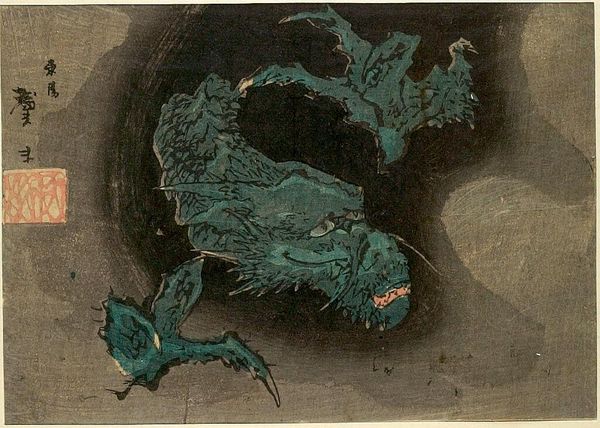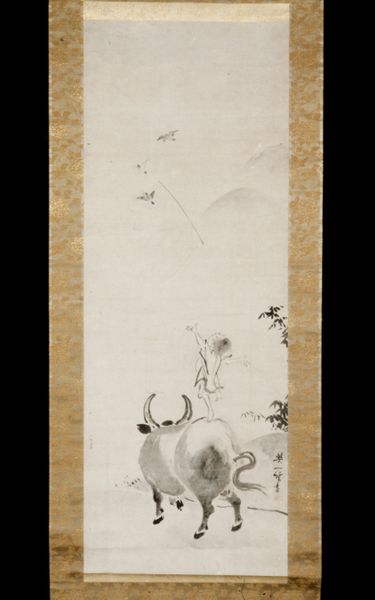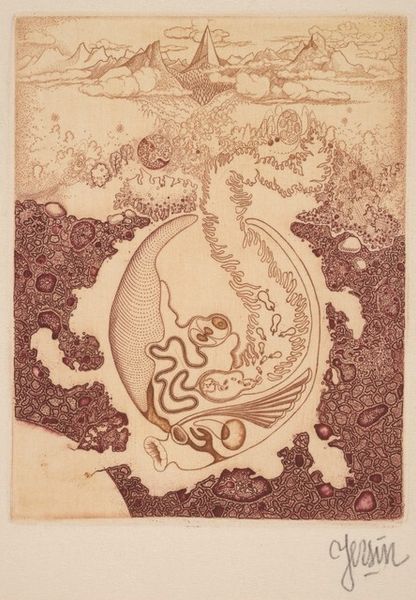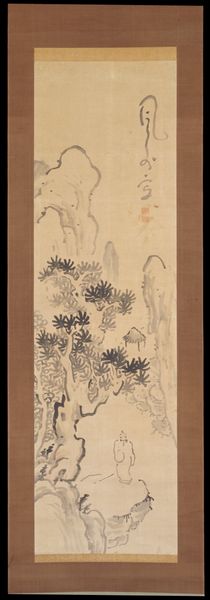
weaving, textile, paper
#
organic
#
asian-art
#
weaving
#
textile
#
figuration
#
paper
#
organic pattern
#
china
Dimensions: 218.2 × 160.1 cm (85 7/8 × 63 in.)
Copyright: Public Domain
Curator: Welcome. We're standing before a remarkable textile fragment, a tantalizing piece known as "Fragment (For a Curtain)." Its creation is tentatively dated between 1644 and 1911, arising, it's believed, from China during the Manchu Dynasty. Editor: I must say, even in its fragmented state, the dynamism is striking! The interplay of curves and counter-curves creates a sense of movement, almost a controlled chaos within the frame. Curator: Precisely. The piece employs woven silk and paper, forming an elaborate depiction of a sinuous dragon amidst swirling cloud-like motifs. The material itself informs the delicate but enduring nature of this once-functional object. Editor: That dragon speaks volumes. Its presence signifies power and good fortune in Chinese culture. Yet, I'm compelled to consider this within the history of court textiles, objects often produced through grueling labor. Whose hands brought this image to life, and what were their social positions in relation to the symbols of power? Curator: That’s a crucial point. Formalistically, we can observe the repeating pattern, the rhythmic distribution of color that establishes harmony within the design. It showcases skillful artistry; for example, note the gradations of color in the water and the subtle detailing of the dragon’s scales. Editor: And yet those formal choices weren’t made in a vacuum. These were deliberate design elements imbued with ideological weight, produced within systems of production that might be exploitative. Curator: Indeed. It reminds us how symbols function across cultures. Even in its incompleteness, the "Fragment" provides insight into textile traditions and visual communication, which may allude to larger implications beyond purely aesthetic pleasure. Editor: Absolutely. Examining it with contemporary eyes invites dialogue. We’re reminded of the power structures encoded in the imagery. It asks us: who has the privilege to display symbols of power? Curator: Looking closely and reflecting upon what this textile piece communicates, both aesthetically and culturally, expands its relevance. Editor: And reminds us that even fragments can provoke important reflections.
Comments
No comments
Be the first to comment and join the conversation on the ultimate creative platform.
